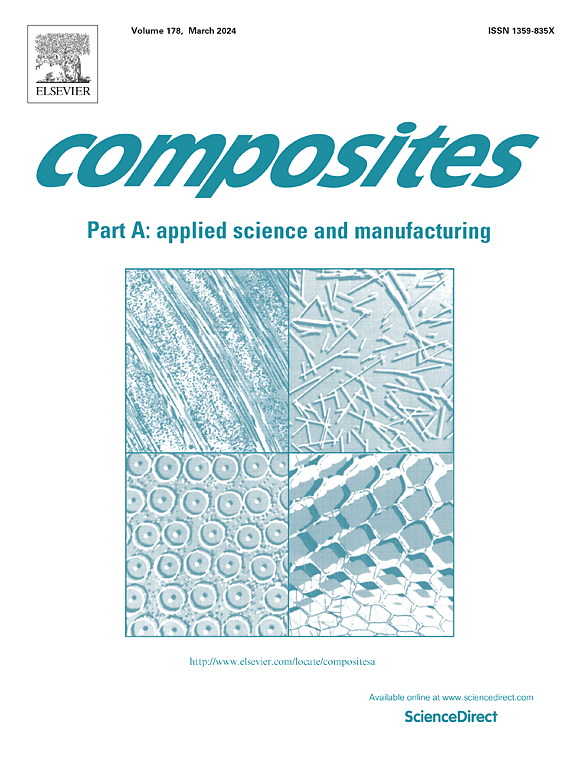In-plane compression behaviors of cedarwood-inspired cores and composite sandwich structures
IF 8.1
2区 材料科学
Q1 ENGINEERING, MANUFACTURING
Composites Part A: Applied Science and Manufacturing
Pub Date : 2025-04-16
DOI:10.1016/j.compositesa.2025.108933
引用次数: 0
Abstract
The microstructures of biological tissues can effectively guide the design of composite honeycomb sandwich structures. In this study, a cedarwood-inspired honeycomb core was proposed. In-plane compression tests were conducted on honeycomb cores and sandwich specimens to analyze the deformation and failure mechanisms of the cedarwood-inspired core and to examine their effects on the mechanical properties and failure modes of the sandwich structures. The cedarwood-inspired microstructure altered the load-transfer mechanism within the core, converting concentrated loads into distributed loads and restricting the expansion of unit cell deformations in the core. Experimental results indicated that the deformation and failure modes of the cores and sandwich specimens were modified, and the mechanical properties were significantly improved using the proposed cedarwood-inspired honeycomb cores. Specifically, the peak load of the cedarwood-inspired sandwich is 31.52% higher. Additionally, a theoretical prediction model was developed to determine Young’s modulus and peak load of the cedarwood-inspired core, offering valuable guidance for the design of future honeycomb cores.
杉木芯材与复合材料夹层结构的面内压缩特性
生物组织的微观结构可以有效地指导复合材料蜂窝夹层结构的设计。在本研究中,提出了一种以雪松木为灵感的蜂窝芯。通过对蜂窝芯和夹层试件进行面内压缩试验,分析雪松木芯的变形破坏机理,研究其对夹层结构力学性能和破坏模式的影响。杉木结构改变了岩心内的荷载传递机制,将集中荷载转化为分布荷载,限制了岩心内单胞变形的扩展。实验结果表明,采用雪松木蜂窝岩心可以改变岩心和夹层试件的变形破坏模式,并显著改善其力学性能。具体来说,以雪松木为灵感的三明治的峰值负荷高出31.52%。此外,建立了一个理论预测模型来确定雪松木蜂窝芯的杨氏模量和峰值荷载,为未来蜂窝芯的设计提供了有价值的指导。
本文章由计算机程序翻译,如有差异,请以英文原文为准。
求助全文
约1分钟内获得全文
求助全文
来源期刊

Composites Part A: Applied Science and Manufacturing
工程技术-材料科学:复合
CiteScore
15.20
自引率
5.70%
发文量
492
审稿时长
30 days
期刊介绍:
Composites Part A: Applied Science and Manufacturing is a comprehensive journal that publishes original research papers, review articles, case studies, short communications, and letters covering various aspects of composite materials science and technology. This includes fibrous and particulate reinforcements in polymeric, metallic, and ceramic matrices, as well as 'natural' composites like wood and biological materials. The journal addresses topics such as properties, design, and manufacture of reinforcing fibers and particles, novel architectures and concepts, multifunctional composites, advancements in fabrication and processing, manufacturing science, process modeling, experimental mechanics, microstructural characterization, interfaces, prediction and measurement of mechanical, physical, and chemical behavior, and performance in service. Additionally, articles on economic and commercial aspects, design, and case studies are welcomed. All submissions undergo rigorous peer review to ensure they contribute significantly and innovatively, maintaining high standards for content and presentation. The editorial team aims to expedite the review process for prompt publication.
 求助内容:
求助内容: 应助结果提醒方式:
应助结果提醒方式:


